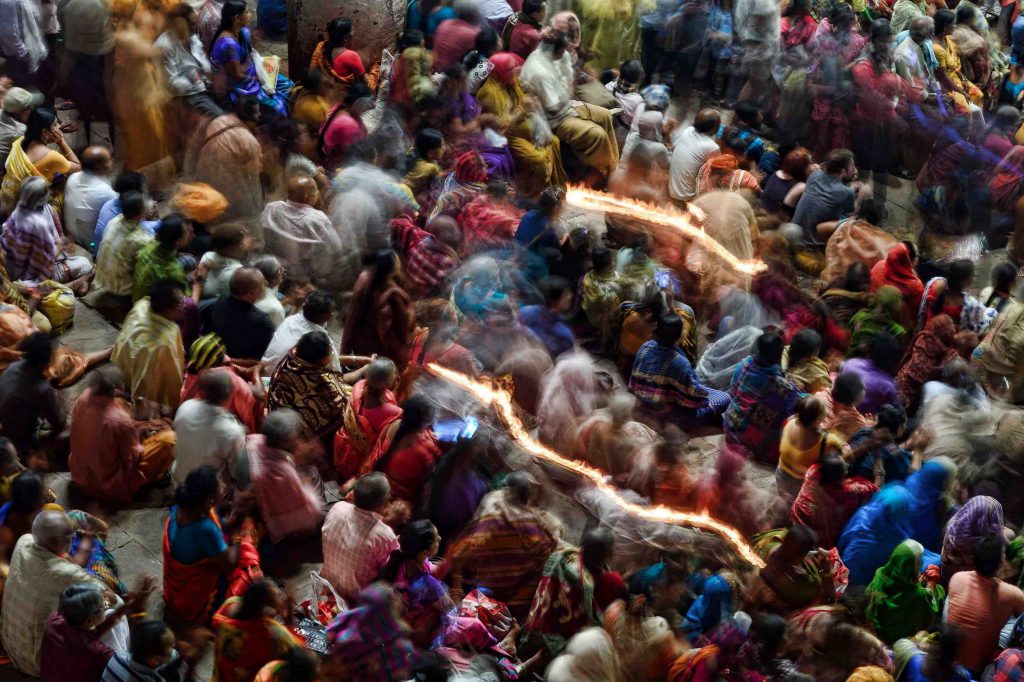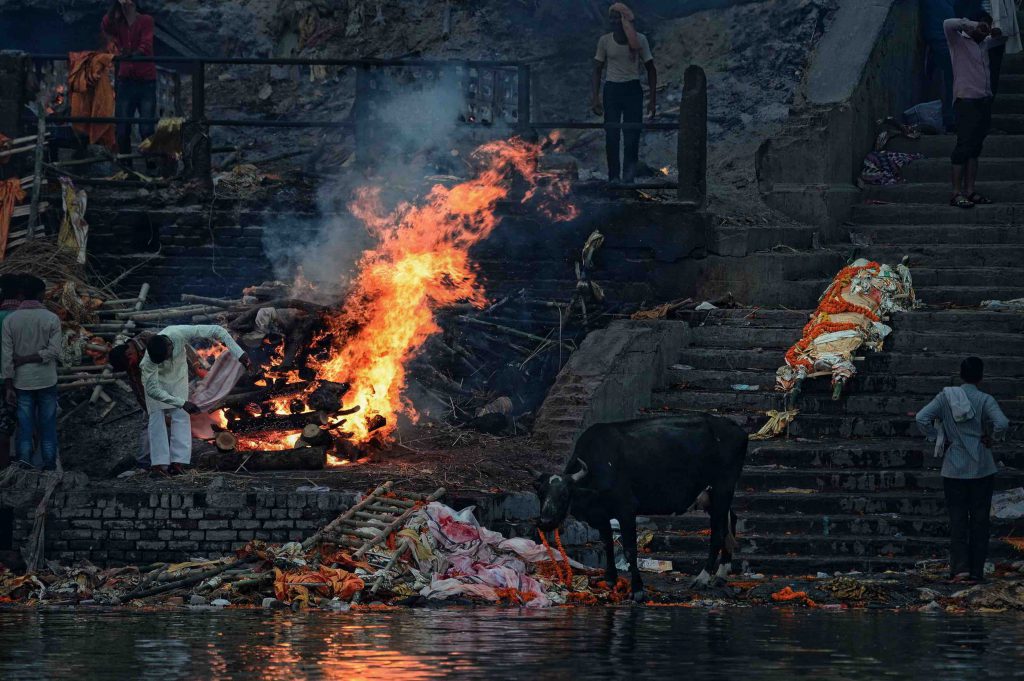Ly Hoang Long
Life in India is filled with paradoxes. To clearly experience this, visit Varanasi—a land of Buddhism and many deities—on the banks of the mysterious Ganges River.

Perhaps nowhere else do life and death coexist so closely! As I strolled along the sandstone-paved sidewalks, the smell of thick smoke from the river blended with the pungent scent of ammonia emanating from the walls. Only later did I realize this was an open-air cremation site. Dashashwamedh Ghat (the Hindi word “ghat” refers to steps leading down to the river) is the busiest place in Varanasi. While some Hindu pandits—or holy men—sat meditating in secluded corners, families of pilgrims were scattered here and there, praying beside the sacred river. Reverent prayers were intertwined with mournful cries rising near the funeral pyres. At the water’s edge, the rhythmic wooden rods of diligent washermen echoed like clock hands ticking out time. Everyone was engrossed in their tasks, serene and indifferent to the point of appearing cold.

Along the paths leading down to the riverbank stood makeshift tents covered with tarps, belonging to pandits who specialize in teaching yoga and fortune-telling. Clad only in loincloths, their faces obscured by long hair and beards, they exuded an eerie mystique. From personal experience, to avoid being hassled, it’s best not to gaze into areas where many pandits gather. I only approached those sitting alone, requesting permission to take photographs—which, of course, required a fee for their cooperation.
Many rituals are performed on this sacred river. I focused on observing and capturing images of a commonplace yet vital ceremony: the river offering ritual known as Ganga Aarti.
At 4 p.m., preparations began—cleaning, laying out carpets, and setting up ritual tables along the path of Dashashwamedh Ghat. Conducted by pandits, this nightly offering ceremony features rituals that present earth, water, fire, and flowers to Mother Ganges. To secure a prime spot, I had to wait at the corner of the first ritual table for four hours. Initially, the pandits seemed displeased, but they gradually became more friendly. As night fell, thousands of devotees crowded Dashashwamedh Ghat. They appeared haggard and tired but also eager and excited.

At 7 p.m., as the chants began to resonate, the pandits simultaneously waved their fly-whisks. Accompanied by music, hymns, and mantras, they conducted rituals offering the purest elements—incense, flowers, and candles—to the deities.
This deeply religious ceremony is well worth experiencing when visiting the banks of the Ganges River. Some may view it as a polluted river, while others feel that a dip in the Ganges washes away all sins. Many dream of being cremated and having their ashes scattered here, fervently believing that their souls will rest for eternity. I understood why Hindu devotees aspire to visit the holy land of Varanasi at least once in their lifetime.
Vietnam Airlines operates direct flights from Hanoi/ Ho Chi Minh City to New Delhi. From there, you can board domestic flights, trains, or cars to reach Varanasi. Visit www.vietnamairlines.com for more details and special offers. For travel within India, check out www.rome2rio.com









